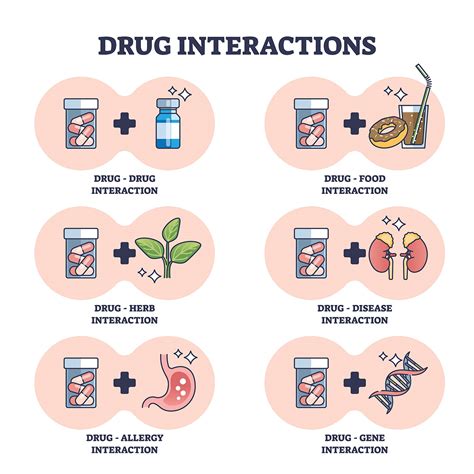Intro
Discover Cefdinir side effects, including allergic reactions, diarrhea, and nausea. Learn about common and rare effects, interactions, and warnings to ensure safe antibiotic use, managing symptoms and preventing complications with this cephalosporin medication.
The importance of understanding the potential side effects of medications cannot be overstated, especially when it comes to antibiotics like cefdinir. Cefdinir, an antibiotic belonging to the class of cephalosporins, is widely prescribed for bacterial infections such as pneumonia, bronchitis, and skin infections. While it is effective in treating these conditions, it's crucial for patients to be aware of the possible side effects they might experience during treatment. This knowledge empowers them to make informed decisions about their health and to recognize when they need to seek medical attention.
Cefdinir, like all medications, can cause a range of side effects, from mild and temporary to severe and potentially life-threatening. The severity and likelihood of experiencing these side effects can vary greatly among individuals, depending on factors such as the dosage, duration of treatment, and the patient's overall health. It's also worth noting that while side effects are a concern, for many people, the benefits of taking cefdinir to treat a bacterial infection outweigh the risks. However, being informed about what to expect can reduce anxiety and ensure that any issues are addressed promptly.
Understanding the side effects of cefdinir is not just about being aware of the potential downsides; it's also about recognizing the importance of antibiotic stewardship. The misuse or overuse of antibiotics can lead to antibiotic resistance, a growing concern worldwide. By being mindful of when antibiotics like cefdinir are truly necessary and by being compliant with the prescribed treatment regimen, patients can contribute to the responsible use of these medications. Moreover, knowledge about side effects encourages open communication between patients and healthcare providers, fostering a collaborative approach to healthcare that prioritizes patient safety and well-being.
Cefdinir Overview

Pharmacokinetics and Pharmacodynamics
The pharmacokinetics of cefdinir involve its absorption, distribution, metabolism, and excretion. After oral administration, cefdinir is well absorbed, with peak plasma concentrations achieved within about 2 to 3 hours. It is distributed throughout the body, with concentrations in tissues and fluids that are sufficient to combat infections. Cefdinir undergoes minimal metabolism and is primarily excreted unchanged in the urine. Understanding these pharmacokinetic properties is essential for determining the appropriate dosage and frequency of administration to ensure therapeutic efficacy while minimizing the risk of side effects.Cefdinir Side Effects

Managing Side Effects
Managing the side effects of cefdinir involves a combination of preventive measures and therapeutic interventions. For common gastrointestinal side effects, patients are often advised to take cefdinir with food to reduce stomach upset. Staying hydrated can also help mitigate the risk of diarrhea and vomiting. In cases where side effects are more severe or persistent, healthcare providers may prescribe additional medications to alleviate symptoms or, in some instances, adjust the antibiotic regimen.Interactions with Other Medications

Patient Safety and Compliance
Ensuring patient safety and compliance with the prescribed treatment regimen is paramount. Patients should be advised to complete the full course of cefdinir as directed, even if symptoms improve before finishing the medication, to prevent the development of antibiotic resistance. Regular follow-up appointments with healthcare providers can also help monitor for any side effects and adjust the treatment plan as necessary.Special Considerations

Pregnancy and Breastfeeding
The use of cefdinir during pregnancy and breastfeeding should be approached with caution. While cefdinir is classified as a category B drug, indicating that it is generally considered safe during pregnancy, the decision to use it should be made on a case-by-case basis, considering the severity of the infection and the potential risks to the fetus. Similarly, although cefdinir is excreted in breast milk, the levels are considered low, and it is generally thought to be compatible with breastfeeding. However, mothers should consult their healthcare providers before taking cefdinir while breastfeeding.Conclusion and Future Directions

Final Thoughts
As we move forward in the era of increasing antibiotic resistance, the responsible use of antibiotics becomes more critical than ever. Patients, healthcare providers, and the broader community must collaborate to promote the judicious use of antibiotics, monitor for side effects, and support the development of new, safer antimicrobial agents. By doing so, we can protect the efficacy of existing antibiotics and ensure that they remain a valuable resource in the treatment of bacterial infections for generations to come.What are the most common side effects of cefdinir?
+The most common side effects of cefdinir include diarrhea, nausea, vomiting, abdominal pain, and headache. These are typically mild and resolve on their own.
Can I take cefdinir if I am pregnant or breastfeeding?
+Cefdinir is generally considered safe during pregnancy and breastfeeding, but the decision to use it should be made on a case-by-case basis, considering the severity of the infection and the potential risks to the fetus or baby.
How can I reduce the risk of side effects while taking cefdinir?
+To reduce the risk of side effects, take cefdinir with food, stay hydrated, and inform your healthcare provider about all medications you are taking. Completing the full course of treatment as directed is also crucial to prevent antibiotic resistance.
We invite you to share your thoughts and questions about cefdinir and its side effects in the comments below. Your experiences and inquiries can help others better understand this medication and its implications for health. If you found this article informative, please consider sharing it with others who might benefit from this information. Together, let's promote a culture of informed healthcare and responsible medication use.
